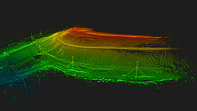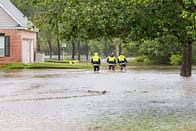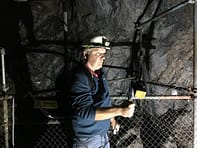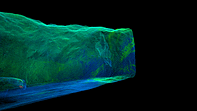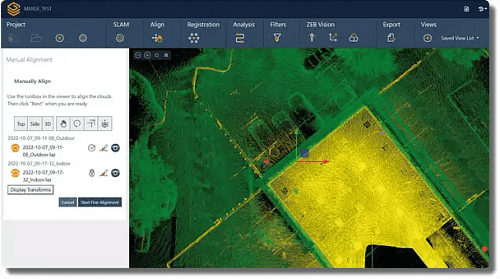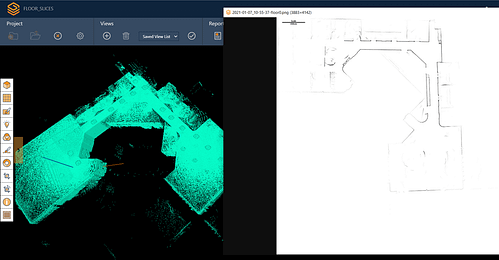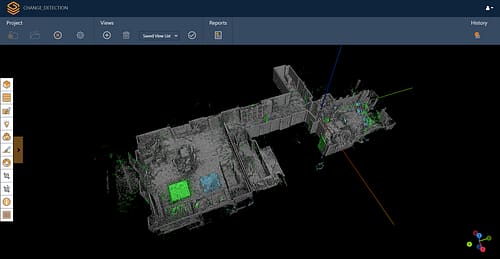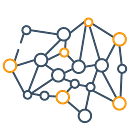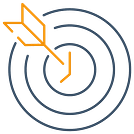Last Updated on 30th March 2023
The ever-growing popularity and accessibility of LiDAR technology is presenting new ways of approaching problems across various industries. Disaster management, typically broken into 4 stages known as the disaster management cycle, is an example of where LiDAR fits in to help streamline processes, saves lives, and protect communities. In this article, we’ll discuss the part LiDAR plays in the disaster management cycle.
What is the disaster management cycle?
First, we should define the stages of the disaster management cycle and the individual importance they hold. Though the terms might occasionally differ, the disaster management cycle breaks down into 4 stages: Prevention & Mitigation, Preparedness, Response, and Recovery.
Prevention and Mitigation
An important stage of the disaster management cycle is prevention and mitigation. Both prevention and mitigation consider future disasters and aim to reduce potential damage. Avoiding disaster scenarios isn’t always possible, so the implementation of prevention and mitigation methods attempts to nullify or minimise impact. Prevention planning looks at hazard identification to pinpoint potential future disasters and a vulnerability assessment considers a community’s capacity to respond to a disaster.
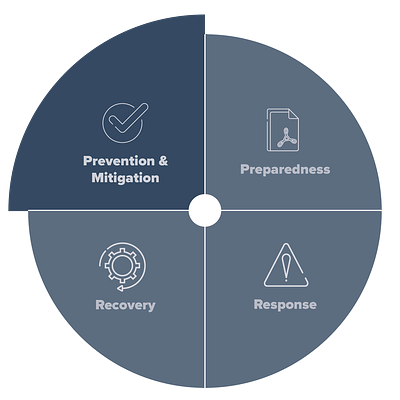
Preparedness
Like prevention and mitigation, preparedness falls under the ‘before’ part of the disaster management cycle. Preparedness refers to the capacity to which people respond to a disaster and considers the mobilisation of personnel, training, or equipment. As with prevention and mitigation, the goal of being well-prepared is to reduce impacts. Preparedness coaching might include fire drills, evacuation procedures, or considering disaster management plans in the event of a disaster.

Response
The response phase is critical because it considers the immediate reaction after a disaster occurs. The execution of this step is fluid and requires fast but considered decision-making combined with the capability to remain orderly in the face of tough scenarios. During the response stage, the primary goals are to prevent the loss of human life, whilst containing ongoing issues in potentially hazardous areas. It’s also a time to set up safe zones, implement the expertise of personnel and utilise supplies.
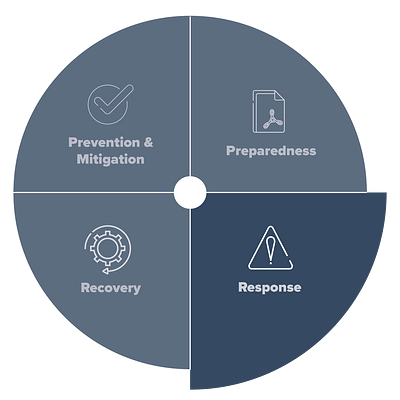
Recovery
Recovery is the final stage of the disaster management cycle. Disasters, whether man-made or natural, often leave behind short and long-term devastation. The implementation of the recovery stage helps this process. Recovery can refer to the needs of the people involved in a disaster i.e. physical or mental trauma, but also considers the disaster area and efforts to rebuild the infrastructure or secure an area.
Completing the cycle, recovery feeds back into prevention and mitigation, assessing the triumphs and failures of the response for future disasters.

What is the most important phase in the disaster management cycle?
All stages of disaster management are critical, however, getting prevention and mitigation right can lead to a reduction in damage or fallout from the next crisis. Innovation and increased access to technology impact this stage, providing more conclusive data that results in better decision-making.
Furthermore, accessible technology leads to a wider audience, including communities in developing countries. The increased reach has the potential to save lives in a humanitarian crisis globally. It also provides safer means of gathering data.
Technologies such as UAV or mobile LiDAR are useful for capturing accurate data quickly. Investment in such technology is transforming both mitigation and relief efforts. For example, monitoring changing landscapes over time with frequent scans using LiDAR technology could lead to crucial decision-making around the type of infrastructure or repairs needed to prevent disasters like flooding.
How does LiDAR fit into the Disaster management cycle?
LiDAR, whether mobile, terrestrial, or airborne has a clear role to play in the disaster management cycle, especially prevention & mitigation, and preparedness. To start, we should look at what LiDAR is.
What is LiDAR?
Light Detection and Ranging (LiDAR) technology is a remote sensing method that emits light from a laser to collect measurements. Hundreds of thousands of laser pulses per second measure the distance between an object and the scanning device, creating millions of points. These points make up a dense and accurate 3D model of a real-world environment.
Types of LiDAR
Traditional methods of capturing data come from static scanning devices, known as terrestrial laser scanners (TLS). The data retrieved from this technology is extremely accurate, however, the equipment is cumbersome which restricts its use in certain key environments.
Modern iterations of LiDAR implementation include mobile, handheld, or airborne via UAV. Though less accurate than TLS, these forms of LiDAR scanning still offer high levels of accuracy, with the added benefits of speed of capture and ease of use. Combining data from all methods of capture usually yields fantastic results across a variety of industries.
Examples of disasters and ways LiDAR can help
Natural Disasters
From destructive earthquakes to devastating hurricanes, natural disasters of all kinds seem to be more frequent and unpredictable as the climate changes. Each disaster causes significant damage, often loss of life, and the economic fallout could be harmful to developing countries.
Here are a couple of examples where LiDAR could help with natural disasters, during the disaster management cycle.
These are just a couple of examples of common natural disasters, but the implementation of LiDAR in the recovery phase for reporting on damage in other disasters like hurricanes or earthquakes is also relevant.
A lesser talked about natural disaster, but no less catastrophic, is avalanches. A recent user of GeoSLAM’s ZEB Horizon scanner mapped an area post-avalanche in the French Alps with the intention of comparing the data with satellite imagery. This would feed into research, reporting on the snow’s change in roughness, for determining radiative transfer modelling. Read the full case study here – GeoSLAM Avalanches in the Vanoise Massif Mountain Range
Man-made Disasters
Unlike natural disasters which are often unavoidable, but need managing, man-made disasters are avoidable if considering the correct safety precaution. Nuclear meltdowns, mining accidents, oil spills, and transport incidents are some examples of man-made disasters. LiDAR technology can assist prior to man-made disasters in both highlighting safety concerns and preparing relevant training models.
Integrating LiDAR into your disaster management cycle process
Live and accurate information is a key part of the disaster management cycle process. Research and innovation into new technologies over the past couple of decades have led to better information, therefore more conclusive disaster management plans.
The consideration of LiDAR technology in the disaster management cycle could save lives, prevent long-term damage, and prove to be a cost-effective solution.
Want to try GeoSLAM LiDAR for yourself?
Fill in the form below to register your interest.


